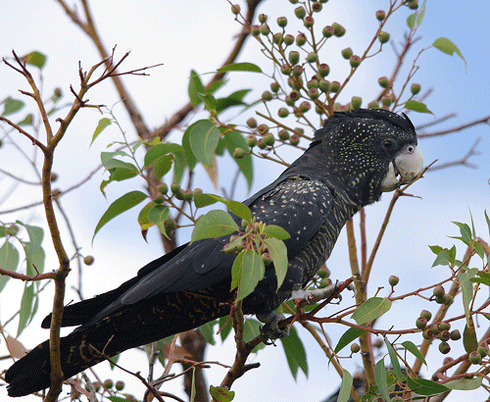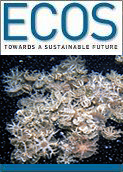
|
Published: 3 September 2012
Iconic WA cockatoos get research funding boost
Murdoch University is to receive $150,000 from Newmont Boddington Gold (Newmont Mining) to help fund black cockatoo health research over the next three years.

|
|
Forest red-tailed black cockatoo (Calyptorhynchus banksii), Perth. There are concerns that pressures - including habitat loss, climate change and disease - may lead to a population crash of this species, and the other two species endemic to south-west Western Australia, Baudin’s cockatoo and forest red-tailed black cockatoo. Credit:
Ralph Green. Licensed under a Creative Commons Attribution Non-Commercial No-Derivatives 2.0 Generic Licence
|
Project leader Dr Kris Warren from Murdoch University said the money was great news for the three black cockatoo species endemic to south-west Western Australia, all of three of which which are experiencing declines – Carnaby’s cockatoo, Baudin’s cockatoo and forest red-tailed black cockatoo.
‘It is critically important for us to understand more about the health and demographics of our black cockatoo populations so that we can help to develop management plans to safeguard the future of these iconic species,’ says Dr Warren.
‘The funding from Newmont will mean we can employ postgraduate veterinary researcher Dr Anna Le Souef to help us continue our work in determining the ages of wild black cockatoos. This will help us understand their life histories and age demographics, give us an insight into their life cycles and aid species recovery programs.
‘There have been concerns that the average age of flocks is increasing and many birds are past breeding age. If this is true, then there may be a population crash when the older birds die.’
Dr Warren and Dr Le Souef are collaborating with Department of Environment and Conservation (DEC), Perth Zoo, the Western Australian Museum and researchers in North America to determine the age of the birds using a method that measures the concentration of a compound called pentosidine in the skin of birds.
They are using this method on samples collected from museum specimens from a Hopetoun flock that died from heat stress in 2010, and injured and debilitated wild black cockatoos admitted for treatment to the Perth Zoo Veterinary Department.
Dr Warren has also been collaborating since last year with colleagues from DEC, Perth Zoo and Birdlife Australia to determine whether disease is a threatening factor for black cockatoos.
She and Dr Le Souef have worked closely with DEC during routine nest checks over the past two years to obtain blood and swab samples from black cockatoos for health assessments.
‘This kind of health data on wild black cockatoos is virtually non-existent due to the difficulty in obtaining samples,’ says Dr Warren.
‘The money from Newmont will ensure we can continue to collect these samples so that we can get as clear a picture as possible on the overall health of black cockatoos.
‘The major threats to black cockatoos are well-known. These include habitat loss, competition with other species for nesting hollows, climate change and human impacts such as vehicle strikes, illegal shooting and poaching. We need to work quickly, collaboratively and comprehensively with our partners to find out if disease is another contributing factor.’
Source: Murdoch University



